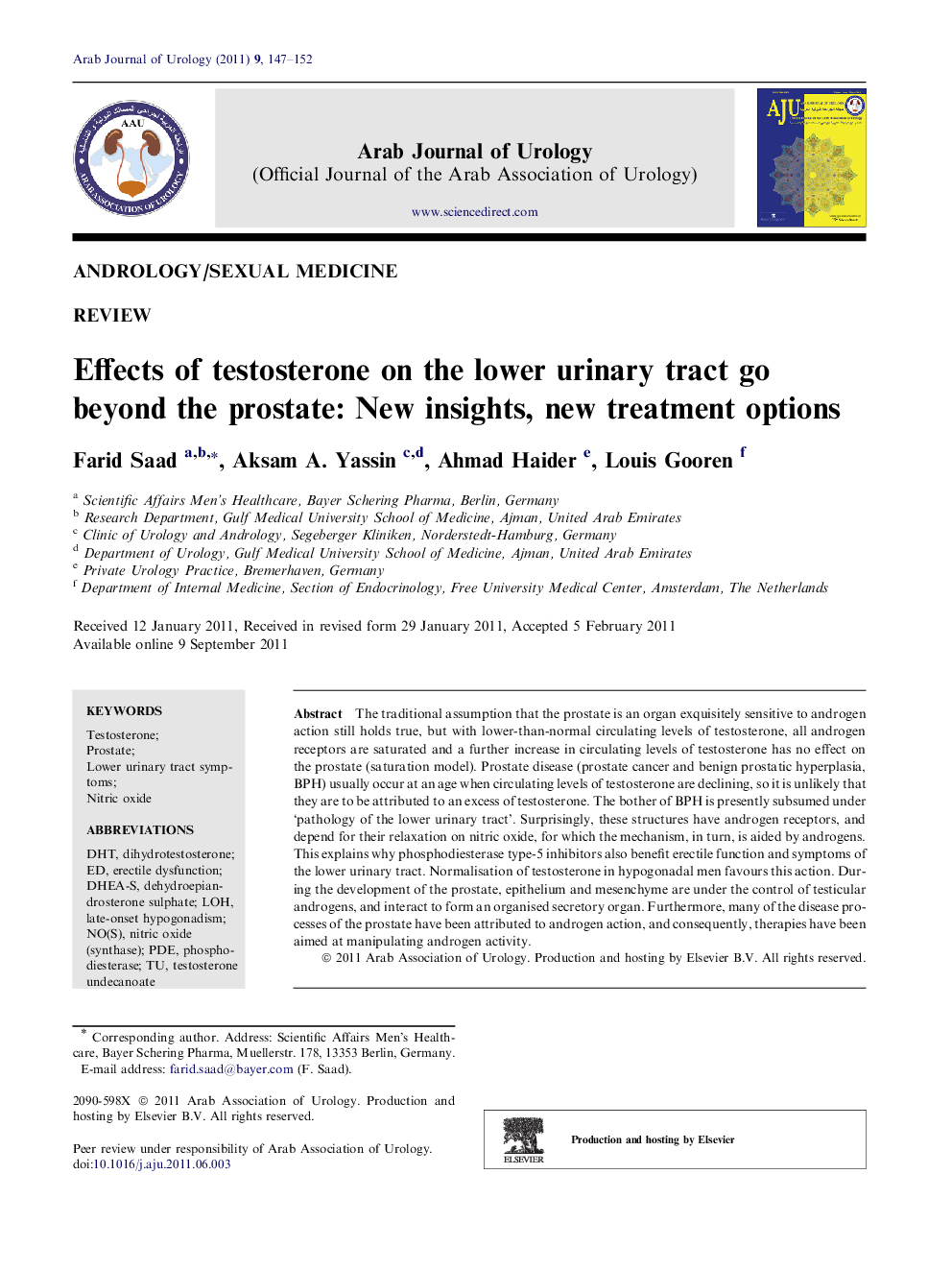| کد مقاله | کد نشریه | سال انتشار | مقاله انگلیسی | نسخه تمام متن |
|---|---|---|---|---|
| 4268245 | 1610750 | 2011 | 6 صفحه PDF | دانلود رایگان |

The traditional assumption that the prostate is an organ exquisitely sensitive to androgen action still holds true, but with lower-than-normal circulating levels of testosterone, all androgen receptors are saturated and a further increase in circulating levels of testosterone has no effect on the prostate (saturation model). Prostate disease (prostate cancer and benign prostatic hyperplasia, BPH) usually occur at an age when circulating levels of testosterone are declining, so it is unlikely that they are to be attributed to an excess of testosterone. The bother of BPH is presently subsumed under ‘pathology of the lower urinary tract’. Surprisingly, these structures have androgen receptors, and depend for their relaxation on nitric oxide, for which the mechanism, in turn, is aided by androgens. This explains why phosphodiesterase type-5 inhibitors also benefit erectile function and symptoms of the lower urinary tract. Normalisation of testosterone in hypogonadal men favours this action. During the development of the prostate, epithelium and mesenchyme are under the control of testicular androgens, and interact to form an organised secretory organ. Furthermore, many of the disease processes of the prostate have been attributed to androgen action, and consequently, therapies have been aimed at manipulating androgen activity.
Journal: Arab Journal of Urology - Volume 9, Issue 2, June 2011, Pages 147–152